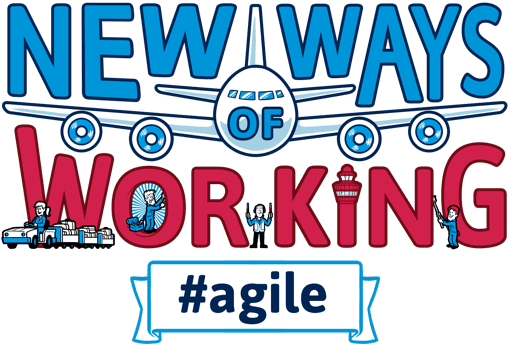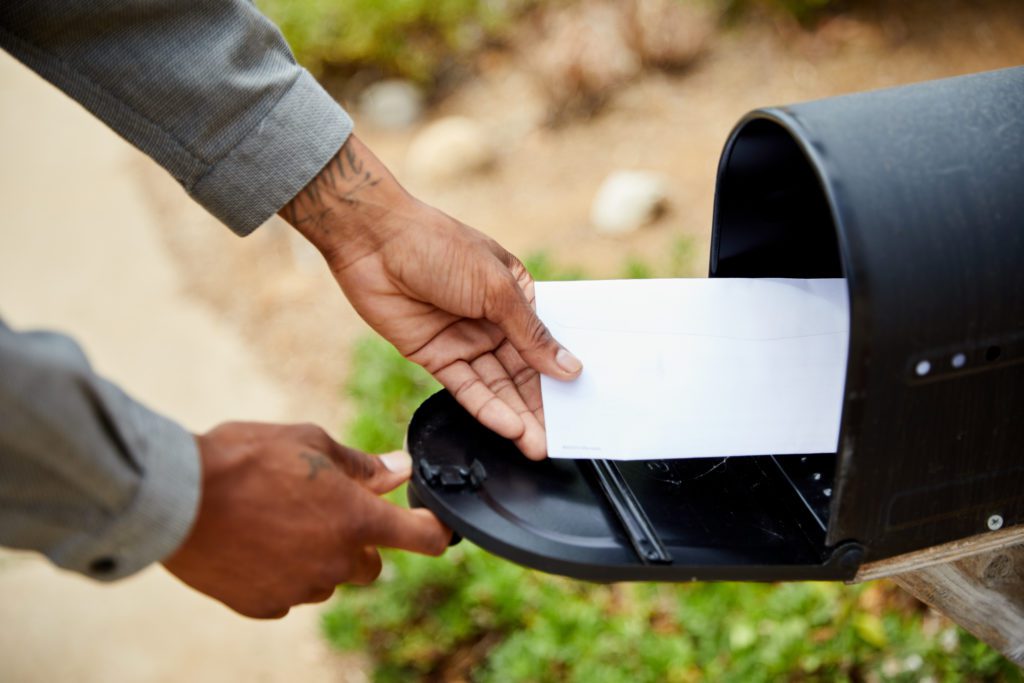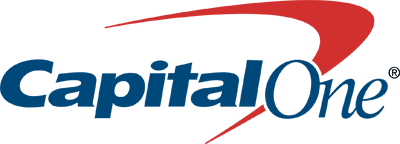
“We wanted to experiment and demonstrate Agile principles and practices across domains. By empowering each business domain, acknowledging specific contexts in domains, fostering sharing, and ‘try and learn,’ SAFe has helped us get on the right track to success.”
—Claire Charbit, Program Management NWOW Agile Adoption, Air France-KLM
Challenge:
Air France – KLM sought to scale Agile practices companywide to improve time to market and efficiency, but must contend with specific contexts and regulations in the different businesses of the airlines.
Industry:
Transportation, Aviation
Results:
- SAFe teams released 17 times in the live environment in seven months compared to every six months previously
- On average, SAFe teams release 20% more effectively than waterfall teams
- The company gained 20% market share in the small and medium logistics market alone
- On one offering, the company exceeded expectation by 25%
- Air France – KLM is more intimate with its clients
Best Practices:
- Focus on Transversal Topics for a sustainable adoption – “From day one, make them part of the adoption,” Moreau says. These topics affect all domains.
- Let domains and teams define objectives – Teams are more committed and empowered if they set their own goals
- Train continuously – The Core Team regularly holds Agile Booster workshops to help with specific adoption challenges such as how to deal with conflicting priorities from both airlines, and what does it mean to have an Agile mindset?
Introduction
One of Europe’s largest passenger airline groups, Air France – KLM operates up to 2,200 flights daily and carries over 93 million passengers annually. The company’s five airlines—Air France, KLM Royal Dutch Airlines, Transavia, HOP! Air France and Joon—cover 320 destinations across 114 countries.

In a highly competitive industry, where information systems can be strategic competitive assets, Air France – KLM set out to reduce its time-to-market with business applications. To do so, the company decided to improve the business/IT collaboration by breaking down silos and expanding Lean-Agile practices.
“Before, in moving from waterfall to Agile, we were not able to make the leap on a broader scale,” says Edwin Borst, Program Management NWOW #agile Adoption, Air France – KLM.
Achieving its goals would require bringing together diverse cultures at French and Dutch offices, as well as contending with diverse contexts, operational constraints or regulations across the different business domains.
An Agile Adoption Empowering Business Domains and Teams
After the successful launch of three ARTs in the Commercial Digital business domain in the late summer of 2016, the company decided to leverage this success and create a broader-scale adoption. Pieter Bootsma, Executive Vice-President of Commercial Strategy at Air France – KLM, noted: “We can all benefit from Agile in the whole group and not only at Commercial Digital.” So, in late 2016, the company chose to foster and accelerate the adoption and scaling of Agile practices.
Prior to launching the broad SAFe adoption, a small group of transformation leaders spent several months defining the scope of the deployment, the way the adoption would be conducted, and preparing for the adoption of SAFe on a larger scale. The leaders decided to adopt Lean-Agile principles and values in the way the program would be set up and run. The goal: demonstrate the mindset and practices, and see the benefits of this approach in a Change Management context.
- Empower each business domain via its own self-organized, multidisciplinary, “Agile adoption team”
- Deliver the change in short cycles, enabling experimentation and quick adaptation
- Start small with minimum viable products (MVPs)
- Share and learn from each others’ domains
- Differentiate and adapt to each domain’s specifications and context

In late 2016, the company chose the Scaled Agile Framework® (SAFe®) to foster and accelerate the adoption and scaling of Agile practices across the various business domains.
“In order to manage our Agile adoption program across 11 business domains within Air France – KLM, we formed an Agile Release Plane (ARP, modified to fit the industry), inspired by SAFe,” says Didier Lavielle, Program Management NWOW #agile Adoption, Air France – KLM. “SAFe gives us the framework we have been missing while at the same time empowering each business domain to define their own way to reach their goals.”
Each business domain (Commercial, Cargo, Flight and Ground Operations, Engineering & Maintenance, Finance, Human Resources) joined the ART with its own change team—named Agile Adoption Team—and self-organized as a product team. As a mix of IT and business, the Adoption Team defines the specific objectives, approach, and steps to take in its domain: people to train, Agile product teams to form, coaching needed, communication plan, monitoring progress, and more.
The company formed “Transversal Tracks,” (groups that tie into all business domains), which joined the ART: Human Resources (e.g. role description, training, and coaching), Finance and Portfolio Management (IT investment processes), Tooling and Capabilities, Communication, and “IT Readiness.” This setup brought value to the 11 domains by not having to reinvent the wheel and ensured consistency in harmonized solutions.
Air France – KLM engaged with BlinkLane Consulting for guidance and training. Around 150 team members in the Agile Adoption ART, from the various business domains and Transversal Track teams, attended Introduction to Agile training, with about 50% of them taking the Leading SAFe course.
Some of the Transversal tracks went through specially designed workshops regarding Lean Budgeting, Agile KPIs & Reporting, and Agile HR, for instance. Those supporting the various adoption teams either attended the SAFe Scrum Master training or were already certified SPCs. So far, more than 300 colleagues from the Adoption ART and from the regular ARTs have followed the Leading SAFe training.
Aligning the Stakeholders on a “Definition of Awesome”
Prior to kickoff, all business domains and Transversal Track groups aligned on a common definition of awesome with four themes:
Agile Enterprise – In the Air France – KLM enterprise, the autonomous, stable, and cross-functional teams are the cornerstones of the organization for driving innovation and continuous improvement. The Transversal processes support and stimulate an Agile way of working and mindset at all levels. This allows the company to focus on continuously maximizing quality and delivering value to the customer.
Value Creation – The Agile adoption aims to create more value—for customers and employees. Quality as well as effectiveness go up. The company succeeds by driving down the time-to-market, and increasing the Net Promotor Score.
Leadership – Air France – KLM develops servant leaders who empower Agile teams and value streams. They engender trust, work with a clear purpose, and provide direction to all levels of the Agile Enterprise. They are recognized for their Agile leadership, enabling others to succeed and drive the organization for continuous improvement. They focus on goals instead of tasks.
Employee Engagement – The organization is recognized as a best place to work. As a result, it attracts talented people. It works closely with customers. People feel responsible and autonomous for their products and results. Employee satisfaction is high and demonstrated by EPS (active promotors).
Big-Room Kickoff in Paris: PI Planning Event #1

The company officially kicked off the Air France – KLM New Ways of Working #agile ART at the first PI planning event in March 2017 in Paris. The Release Train Engineer (RTE), Odile Moreau from BlinkLane, was part of a small group of transformation leaders called The Core Team. The team, which includes three from Air France – KLM and three from BlinkLane, helps foster the adoption and structure; organize the program and its events; support the domains and the Transversal tracks; and monitor the progress and the results.
The five Transversal tracks, 11 business domain adoption teams, and the Core Team formed the ART, with 150 people. The company’s group CIO, Jean-Christophe Lalanne, and Commercial Strategy EVP, Pieter Bootsma, attended as executive sponsors and set the tone for the importance of the initiative.
At the first PI event, Air France – KLM introduced a logo created specifically for the program, which added strategic emphasis.
Team members from France and the Netherlands came together, bringing distinctive cultures and very diverse states of Agile: some were new to Agile principles and some brought several years of experience
“Although this approach and the PI Planning event was new for most people, everyone was really driven and motivated to share experiences, learn from each other, try and experiment, and work toward results,” Lavielle says.
Yet despite that excitement, many were hesitant to break out of their own groups and talk with those they had never met. Thus transformation leaders requested that anyone adding yarn to the program board—indicating dependencies—discuss it directly with the individuals involved.
As the first PI progressed, teams achieved about 60 percent of their stated objectives, on average. In leading up to the second PI, they applied the lessons learned and set more accurate, quantifiable objectives.
At the start of the second PI, Air France – KLM began a new practice of having each business domain and Transversal Track share its business results with the entire group as a PI begins. At the same time, this served as an opportunity to Inspect and Adapt what worked and what didn’t.
By the third PI, in the fall of 2017, Air France – KLM had grown to 208 product teams and eight ARTs across Commercial Digital, Cargo, Commercial, and AF Flight Ops. The KLM HR division and the AF Ground Services have both organized Value Stream workshops to either launch new trains or reorganize their current Agile teams into an ART. The same applies to Digital Commercial. Following on the continuous Inspect & Adapt, Commercial Digital will also reorganize its current ARPs to allow for more alignment on the business objectives and improve its delivery model.
Lessons Learned and Best Practices
Along the way, they learned a number of lessons to improve their efforts going forward:
- Have an approach for dealing with the diversity across domains, both in their Agile maturity and in their specific context and constraints (operational, security, and regulations)
- Establish strong ownership in each business domain via an individual adoption team
- Since most of the dependencies lie between Transversal Tracks (HR or Finance impediments) and business domains, co-create solutions for Transversal topics that facilitate exchanges and encourage learning from each other
- Actively address the challenge of changing the managerial mindset and leadership styles
- Understand that setting realistic goals for the next 15 weeks will be difficult for most, as is learning to set smaller, more realistic goals
- Encourage individuals to ask for help from someone in a Transversal Track or the Core Team
- Ensure that the team members who are not 100% dedicated and co-located commit to objectives and organize in a way to still be able to work together and produce results
- Ask for regular feedback to respond to uncertainties and come up with valuable results
- Leave personal egos at the door and achieve common objectives
Investing in Role-Based Training
Where it can, the company trains with the SAFe curriculum. All RTEs go through SAFe Release Train Engineer training. Scrum Masters with the PSM certification are offered the SAFe for Scrum Master training and certification when joining an ARP. The same applies for Product Owner. Team members also attend SAFe for Teams when they join an ARP. Additionally, the company developed training and workshops for Lean Budgeting, using the Weighted Shortest Job First, and other practical guidelines.
A community of 40 coaches support the effort at various levels: teams, domain, adoption, and enterprise. This community is growing in maturity and results. In the third PI, the company will focus on internalization and growth of the coaches, ensuring a more sustainable and economical support for the Agile community.

Results: 20% More Effective Delivery
Since deploying SAFe, Air France – KLM notes greater collaboration between business domains and Transversal Tracks. Within three months, their efforts began paying off in business results in the Cargo group:
Time-to-market – Each ART team delivers on its promises every three weeks. Since moving to SAFe, the company released 17 times in the live environment in seven months compared to every six months previously.
Quality – Of the 17 releases, the company had to delay just one due to a major incident
Productivity – SAFe teams deliver, on average, more than 20% more effectively than waterfall teams
Adaptability – With a PI cycle of 12 weeks, Air France – KLM has been able to pivot its vision three times in the past year, allowing the company to tap into new business opportunities much more quickly and easily
Market share – The company gained 20% market share in the small and medium logistics market alone with this flexibility
Predictability – The velocity of ARTs builds in more predictability and enables teams to take ownership and show greater craftsmanship. Team stability is also an important success factor in results
Business value – On one offering, the company exceeded expectation by 25%
Employee satisfaction – PI Planning results in better transparency and autonomy for the teams. Seeing the vision in the Cargo group encourages team members to contribute to the business value and increases their work satisfaction, as well as collaboration between business and IT
Customer satisfaction – Air France – KLM is more intimate with its clients. All Product Owners from the business side have a greater understanding of the demand. Going live with small changes and new functionality every three weeks gives them a faster feedback loop and more rapid pivoting, enabling groups to deliver greater value in its IT solutions

Air France – KLM looks forward to seeing ever-greater progress as it moves toward DevOps, allowing the ARTs to deliver end-to-end with an integrated team.
“We have started experimenting more with weighted shortest job first (WSJF) in our priority at the Features level,” Moreau says. “We also want to harness the work with Portfolio Management and Lean budgeting.”































